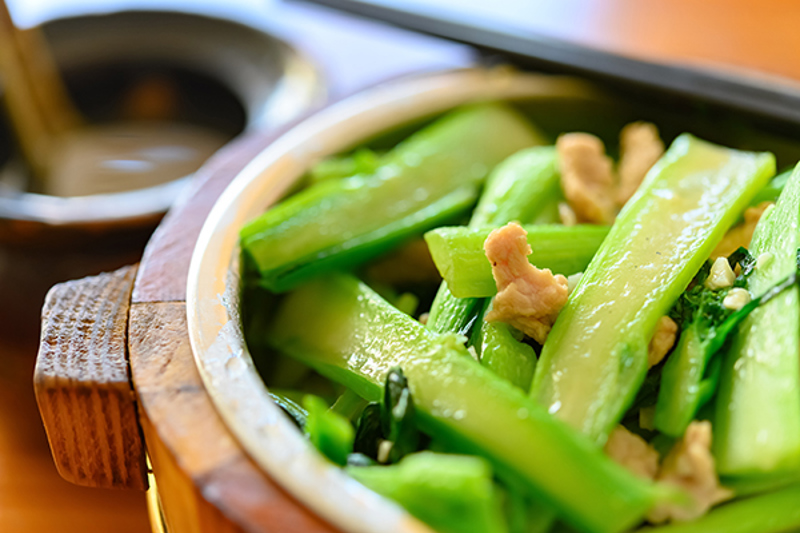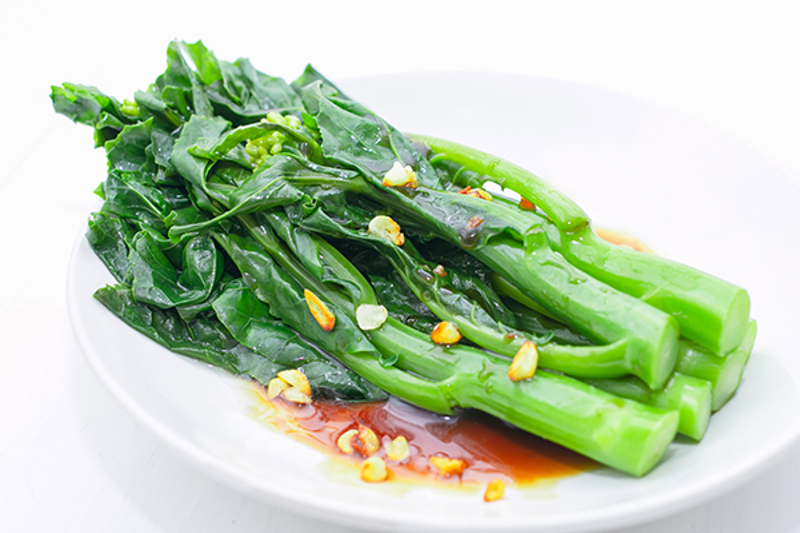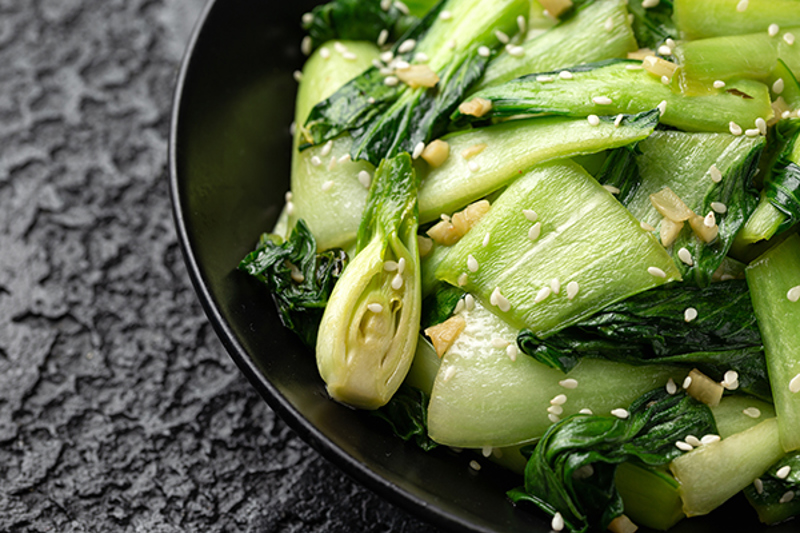Yates Account
Join now
Create a Yates account today!
Sign up to join the Yates Garden Club for monthly e-mails packed with seasonal inspiration, tips for success & exclusive promotions.
Plus if you’re a Garden Club member you can take part in the Yates Growing Community - a blog to share successes, get advice & win prizes in fun challenges along the way!

Forgot password
Enter the email address associated with your account, and we'll email you a new password.

It’s amazing how New Zealand's food styles have changed in the last few decades. We’ve moved from being a traditional ‘meat and three veg’ society to one that embraces influences from all the great World cuisines.
Lots of us have adopted fresh, Asian-style vegetables into our cooking repertoire, because they're simple and delicious. If you're looking for inspiration for fast, healthy and tasty dishes, read on for the lowdown on Asian greens.
If you walk into a good fruit and vegie shop, they’ll no doubt have a range of interesting greens that you may not have tried before. Here’s our quick primer on our favourites, how to cook them, plus how to grow them fresh at home.
Our go-to favourites have to be bok choy, gai lan and choy sum. These three vegetables are a great place to start, because they are so easy to work with, and consistently yummy.
Crisp, succulent Bok Choy (also known as Chinese cabbage) lends itself to stir frying, steaming, or simmering in stock or broth. You can even add the raw leaves to a salad. We have both of the commonly seen types of bok choy in our Yates seed range: white-stemmed bok choy, and pale green stemmed Shanghai bok choy.
Crunchy Gai Lan (AKA Chinese broccoli) has deep green, glossy stalks with tiny broccoli-like florets at the tops, often forming tiny yellow edible flowers. Try it stir-fried with some fragrant garlic or ginger, or with a brief dip into salted boiling water then served drizzled with oyster sauce (or soy sauce). Sensational taste!
Choy Sum looks similar to gai lan at first glance, but the stems and leaves are more slender and it tastes a bit sweeter. It tastes great if it's boiled briefly in salted water; or if you’re planning to have leftovers you can blanch it in unsalted water to make it last in the fridge. It’s delicious steamed, stir-fried or in soups.

Cooking Tips for Asian Greens
Stir-frying Asian greens is probably the most common cooking method, so we’ve collected together some tips. For this job, you can’t beat a wok! They transfer heat really well and the high sides make it much easier to stir and toss ingredients.
If you’re frying bok choy or gai lan, it pays to chop the stems into smaller sections. If your vegies have quite thick stems, blanch them for a few seconds in salted boiling water (whip them under a cold water tap for just a second when they come out of the pot; then either shake off the water or blot them on a paper towel) then add them to your stir fry. It makes them beautifully tender.
If you’re adding garlic or ginger, you can control the intensity of the flavour by the size you chop them. If you mince them finely you’ll get a stronger flavour, if you chop them into bigger chunks the flavour will be more subtle.
Alternatively, you can go straight for the blanching method and leave it at that. Ideally you want to poach the vegies in salted boiling water until they’re just firm to the bite, then chill them quickly in cold water. Drain them thoroughly, then give them a drizzle of soy or oyster sauce, with maybe a sprinkle of fried shallots across the top for garnish.
A third option is to simmer the vegies in broth. It’s a delight to use broth that you’ve lovingly cooked for hours, but it’s absolutely fine to use chicken stock if you’re in a hurry (it still tastes great). Cook the vegies until they’re just tender, season with salt, then serve in a bowl of broth.

Growing your own Asian Greens
Most Asian vegetables and herbs dislike temperature extremes, so autumn and spring are the best seasons for growing them. They all appreciate good growing conditions, which means pre-preparing the soil by digging in some organic matter (aged manure or compost) and mixing in organic-based fertiliser such as Yates Dynamic Lifter Organic Plant Food. Give this mixture a couple of weeks to settle in before planting seedlings or sowing seeds. It’s best to sow directly into the growing position in the garden or pot, as seedlings tend to bolt when transplanted. Make successive sowings every few weeks to lengthen your harvesting window (and ensure a fresh supply!)
Keep the plants growing rapidly by regular fertilising. Yates Thrive Natural Fish Seaweed+ Plant Food is a natural-based fertiliser that supplies nutrients and, at the same time, encourages healthy soil and strong roots. If you keep consistently harvesting the stems, it promotes new growth. Harvest right from the early stages, while stems are tender.
The Yates seed range includes quite a range of easy-to-grow varieties for Asian-inspired cooking. There’s crisp and crunchy Wong Bok, tangy Tatsoi, Chinese Climbing Snow Peas, Snake Beans, succulent Luffa, Daikon radish and its peppery leaves, Shallots and classic herbs like Coriander, Gow Choy (garlic chives) and Thai Basil.

A surprisingly versatile vegetable for Asian cooking is the Japanese turnip. Yates Japanese Turnip Hakurei bears little resemblance to traditional European turnips. Garden writer Fionna Hill fell in love with this vegetable; here’s what she has to say about it. “I’ve discovered a great new vegie …Yates Hakurei – AKA Japanese Turnip. It’s also known as kabu, the salad turnip or Tokyo turnip. I’m a kiwi South Islander and turnips to me mean swedes that have had Southland frosts and are as big as my head. They’re lovely mashed with lashings of butter and pepper, but they don’t compare with Hakurei!
Hakurei are little round plump numbers with bright white skins and flesh like freshly-laundered white linen sheets in a soap powder ad. I planted seeds last year and ate the first crop eight weeks later. They’re even faster growing than radishes. I couldn’t wait and picked them smaller than I probably should have – they looked like a boutique-designed vegie. The flavour is sweetish, and fresh-tasting with no earthiness or bitterness. Flesh is crisp but softer than a regular turnip and not woody or tough; they’re excellent in soups, salads and Asian-style cooking and seem sweeter when cooked. Plant lots and pick them young: even smaller than the recommended 5cm across.
At first I lightly boiled them and ate them with a dob of butter. Then I discovered that you can eat them raw and also that the leaves are edible. I’ve seen US chefs cook them whole with the stalks and leaves on. I’ve cut the stalks short to eat, too – just a little green cluster at the top, as I’ve seen in high end restaurant dishes. For a simple salad, wash and finely slice a few (no need to peel) and add slices of apple and some blanched almonds; dress with a vinaigrette.”














Share
Share this article on social media